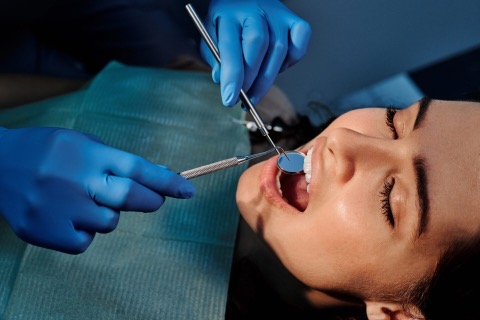
Cleanings and Exams
1. A physical exam
Most teeth cleanings are performed by a dental hygienist.
The dental hygienist will examine your teeth and gums for any signs of gingivitis (inflamed gums) or other potential concerns. After the cleaning, the dentist usually does his own complete examination.
2. Removing plaque and tartar The dental hygienist uses an ultrasonic scaler to get rid of plaque and tartar around your gum line, as well as in between your teeth. The ultrasonic action removes deposits and stains by vibration 25K Hz. The more tartar there is in your mouth, the longer this may take. Brushing and flossing stops plaque from building up and hardening into tartar. Once you have tartar, you can only have it removed at your dentist’s office.
3. Fluoride polish
After your teeth are completely tartar-free, the hygienist brushes them with a high-powered polisher.
Professional cleanings use toothpaste that smells and tastes like regular toothpaste, though you can often choose between flavors. However, it has a gritty consistency that gently scrubs your teeth. Normally, this polishing of the teeth is done twice a year.
Other potential steps
Professional teeth cleanings are scheduled twice a year, while X-rays are normally done once a year. Still, depending on what your dentist or dental hygienist observes in your mouth, they might do other exams during your visit. For children, a dentist may recommend molar sealants to help prevent cavities in hard-to-brush areas.
Whether you need any additional steps or not, the key is to keep going back to the dentist for regular teeth cleanings to prevent problems altogether